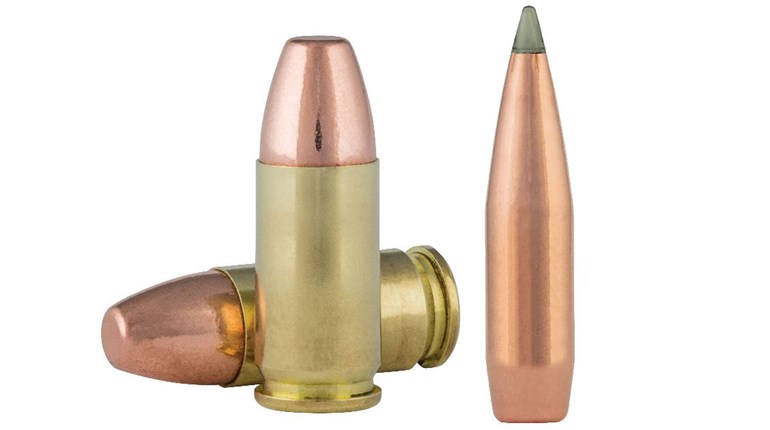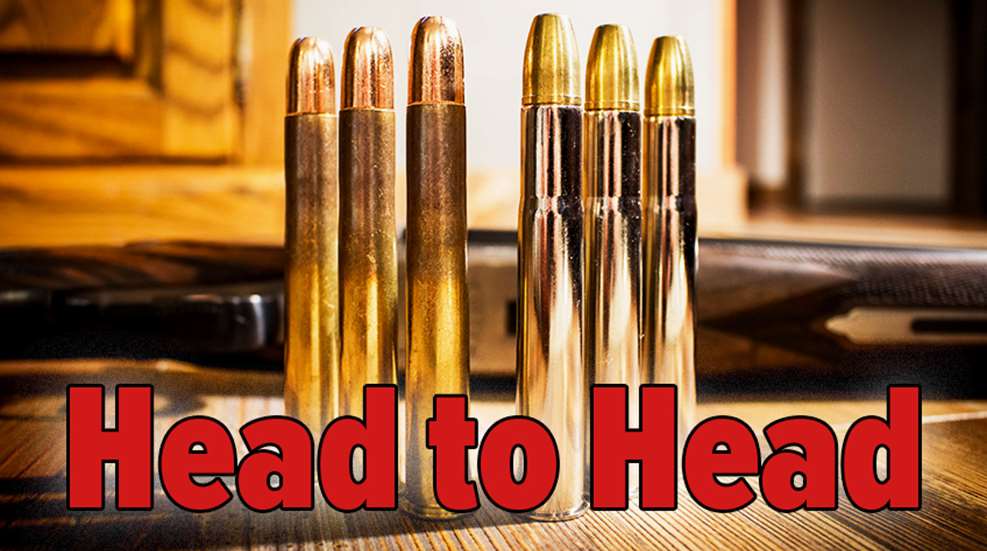
The double rifle holds a certain romantic mystique among hunters of Africa’s dangerous game. While it is most definitely associated with the Golden Era of safari—between 1900 and the beginning of the World War II—the double rifle has seen a resurgence, and production of double rifles is on the rise.
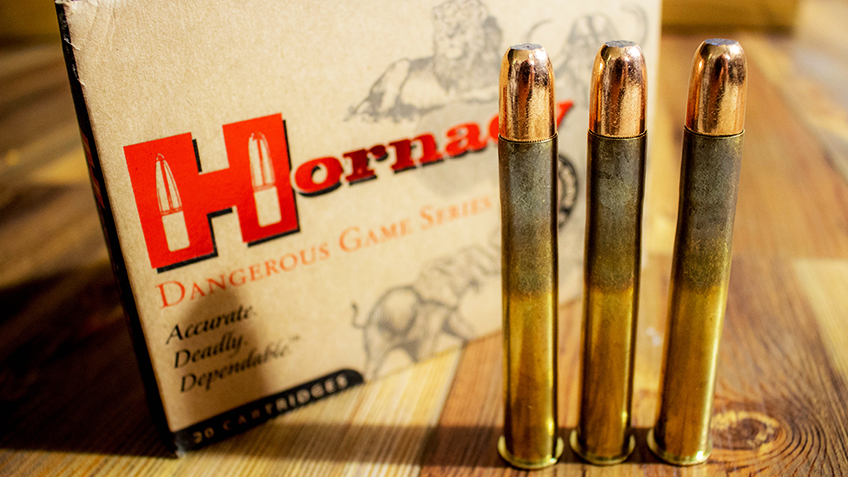
Among the wide selection of double rifle cartridges, only a few have survived the dark days, when the large, rimmed Nitro Express cartridges were virtually unavailable. And, while there are choices ranging between the .375 H&H Flanged and the behemoth .600 and .700 Nitro Express, there are those cartridges that maintain their popularity. Among these are the .470 Nitro Express, and the benchmark .450 Nitro Express. Both make an excellent choice for an all-around dangerous game cartridge, so let’s compare and contrast the two.
Starting with the smaller and the older of the two, John Rigby & Company’s .450 3¼-inch Nitro Express was released in 1898, being derived from the early .450 Black Powder Express, but the NE version was designed to handle smokeless powder. It’s a straight-walled, rimmed cartridge, and drives a .458-inch diameter 480-grain bullet to a target muzzle velocity of 2150 fps. This formula would go on to become the benchmark for hunting any and all dangerous game; it delivers just over 5,000 ft.-lbs. of energy at the muzzle and offers excellent penetration. The case had some problems with its cordite propellant, giving extraction issues in the tropical heat; as a result some reduced loads were developed for use in the tropics.
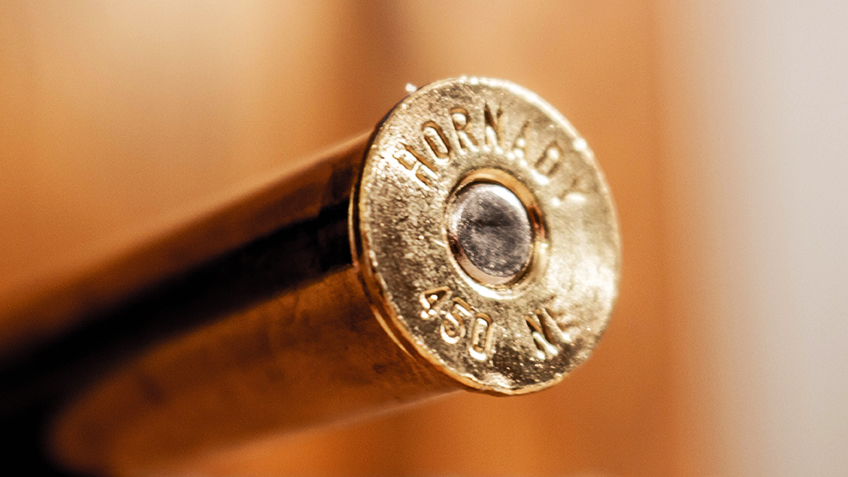
The .450 Nitro Express is noteworthy for a number of reasons; it was the accepted all-around choice for hunting not only dangerous game, but all game, especially before the smaller-bore cartridges took root in the hunting world. Additionally, the .450 became the impetus for so many cartridges that followed it, including the .458 Winchester Magnum that followed nearly six decades later. But so many of the double rifle cartridges that came along in the wake of the .450 only saw the light of day because of native insurrections in India and Sudan. In 1907, the British government banned the use of all .45-caliber rifles in those countries to prevent the enemy from getting their hands on projectiles which could be used in the .577/450 Martini-Henry rifles. As a result, the race was on to find suitable replacements for the extremely popular .450 NE.
The British firm of Joseph Lang answered the call with its .470 Nitro Express, a necked down .500 3¼-inch Nitro Express case, designed to use .474-inch diameter bullet of 500 grains, at a muzzle velocity of 2150 fps. Like the .500/465, .475 NE, .475 No. 2 Jeffery and others, they did in fact replicate the ballistic formula of the .450 NE, albeit with a different bullet diameter. The .470 Nitro Express is one of the herd of cartridges that delivers the 500-grain/5,000 ft.-lbs. combination, but it remains the most popular. Part of the reason is that Joseph Lang shared the design with the industry instead of making it a proprietary cartridge, and many different makers chambered their rifles for it, including Rigby, Westley Richards and Holland & Holland. Another factor is that Federal released quality factory ammunition in 1989, probably due to the fact that Jim Bell and his Brass Extrusion Labs Limited produced some of the first new .470 brass cases as the double rifle began to return in the 1970s. To this day, the .470 Nitro Express remains one of the, if not the, most popular cartridges for double rifles.
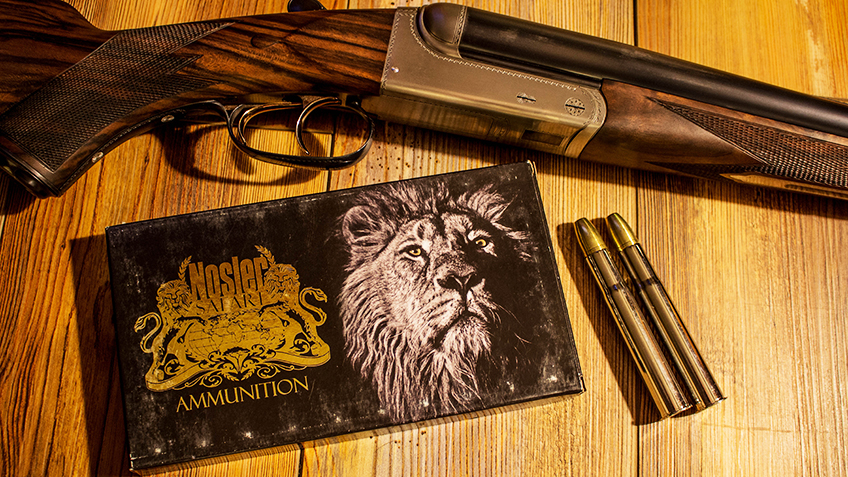
Comparing the two, we can take the energy figures off the table, as both produce virtually the same amount of muzzle energy, by design; though the .450 is designed to use a 480-grain bullet vs. the 500-grain of the .470, I don’t feel the energy figures make a difference. On paper, the .450 Nitro Express offers a potential penetration advantage, as even the 480-grain .458-inch bullet has a higher sectional density figure than that of the 500-grain .474-inch slug; specifically 0.327 vs. 0.316, though any bullet with an SD figure over 0.300 is considered a good choice for dangerous game. I feel the penetrative qualities of both cartridges are so close that the argument is practically moot. Shooting the two cartridges, I have found that stock design has more influence on felt recoil than does the cartridge’s design; both have appreciable recoil and that difference is also negligible.
Overall, I give the advantage to the .470 for two main reasons. First, the availability of factory loaded ammunition for the .470 NE far surpasses that of the .450 NE, and that is going to be an issue for those who don’t handload their own ammunition. While both of these are primarily African safari calibers, I’ve seen much more .470 NE ammo in safari camps than .450 NE ammo. Hornady is the primary source of .450 NE ammunition, and while it is very good stuff, the choices are indeed limited.
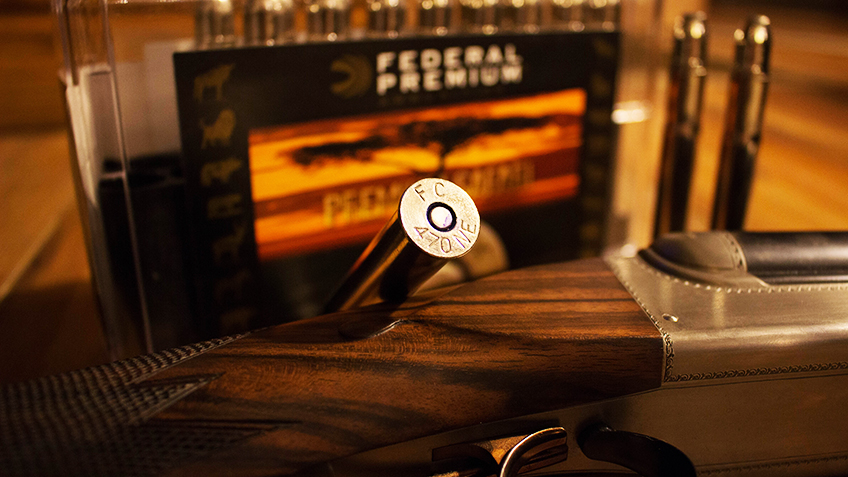
Second, the balance of a double rifle is, to me, paramount. The frame sizes for the two cartridges are usually different, with the .450 being one of the larger cartridges on a medium frame, and the .470 being the smallest built on the large frame size. As a result, I personally feel the .470 balances better, especially with 26-inch barrels. When I picked out my own double—a wonderful Heym 89B—I was measured for stock fit, and seriously considered both cartridges equally. Trying several different rifles in differing stock lengths and barrel lengths, I found that a .470 NE with 26-inch barrels and a 14¼-inch length of pull fit me like a glove, and balanced much better than any of the .450s.
I got to bring that .470 to Zimbabwe for Cape buffalo, and no matter whether we were in the thick, riverine bush—where distances would be measured in feet—or in the open mopane where shots were available out to 100 yards, I felt completely comfortable with the feel and fit of my rifle, and I can’t think of any situation where that is more important. I ended up taking two buffalo in quick succession with a left and right barrel at 82 and 85 yards, and couldn’t have been happier with the rifle.
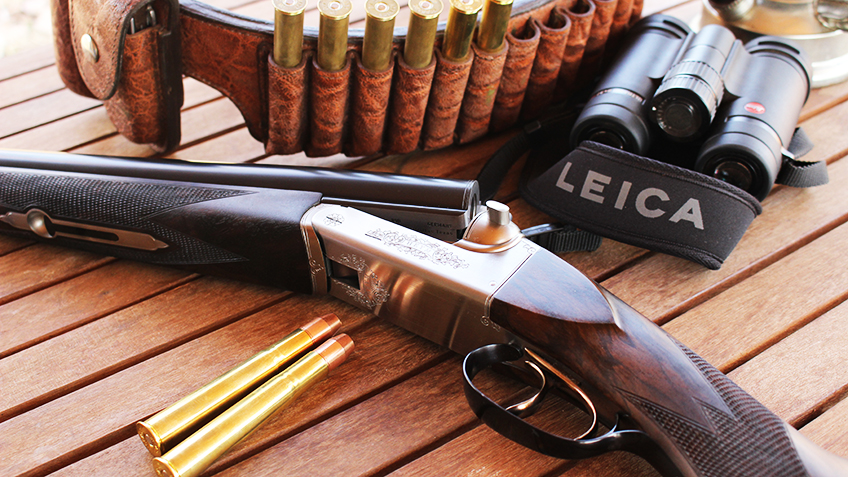
That is not to say that I couldn’t have accomplished the same with a .450 NE, but to me the .470 NE engendered a lot of confidence. I’m comfortable with my choice, and while I do handload my ammunition, I have at least a half dozen factory choices that shoot very well, including stuff from Hornady, Federal, Norma, Nosler, Choice and Barnes. I don’t think a hunter would be unhappy with either choice, but the history of double rifle cartridges has smiled brightly on the .470 Nitro Express.
Looking for previous installments of our "Head to Head" series? We've got you covered.
• 350 Legend vs. .35 Remington
• .280 Ackley Improved vs. 7mm Rem. Mag.
• .404 Jeffery vs. .416 Rigby
• .243 Winchester vs. 6mm Creedmoor
• .300 PRC vs. .300 Win. Mag.
• .30-06 Springfield vs. .270 Winchester
• 6.5 Creedmoor vs. 7mm-08 Remington
• 8x57 Mauser vs. .318 Westley Richards
• .358 Winchester vs. .350 Remington Magnum
• .22-250 Remington vs. .220 Swift
• .270 Winchester vs. .270 WSM
• .26 Nosler vs. 6.5-300 Weatherby Magnum
• .458 Win. Mag. vs. .458 Lott
• 7mm Rem. Mag. vs. .300 Win. Mag.
• .243 Winchester vs. 6mm Remington
• 7x57mm Mauser vs. 7mm-08 Remington
• .25-06 Remington vs. .257 Weatherby Magnum
• .338 Winchester vs. .375 H&H Magnum
• .30-30 Winchester vs. .35 Remington
• .257 Roberts vs. .250-3000 Savage
• .270 Winchester vs. .280 Remington
• .35 Whelen vs. 9.3x62mm Mauser
• .416 Rigby vs. .416 Remington Magnum
• .308 Winchester vs. .30-06 Springfield
• .22 Nosler vs. .224 Valkyrie
• .300 Win. Mag. vs. .300 WSM
• .223 Remington vs. .22-250 Remington














